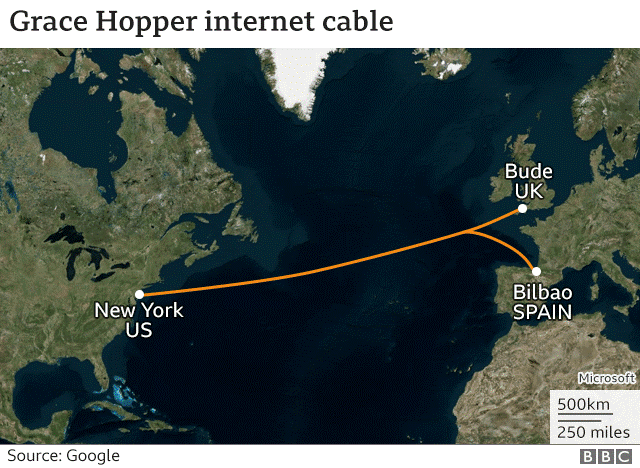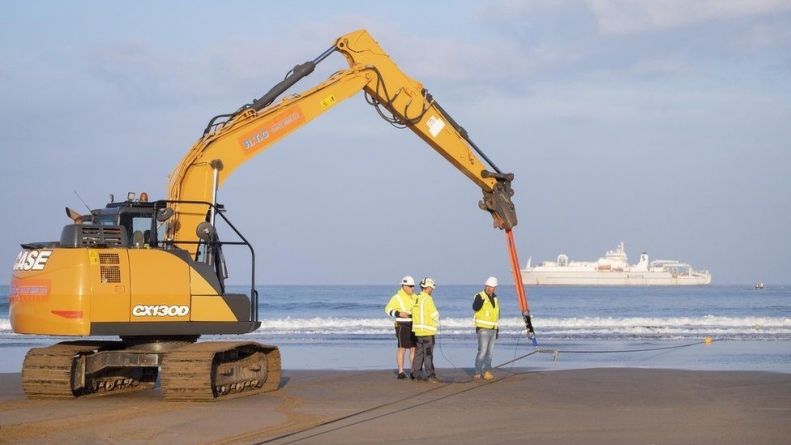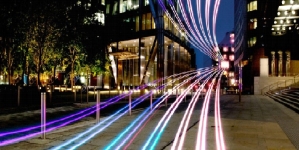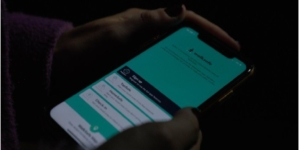-
IRELAND: “From 800 to 7,000”: Ireland’s Education Appeal Soars Among Indian Students - 21 hours ago
-
TORONTO: Canada Sets Weekly Work Hour Limit For Indian Students At 24 - 2 days ago
-
TORONTO: India strongly protests ‘Khalistan’ slogans at a public event attended by Canadian leaders - May 2, 2024
-
TOKYO: Japan Offers Scholarships To Indian Students Pursuing Research - May 1, 2024
-
ZAGREB: India-Croatia Foreign Office Consultations (FOC) - May 1, 2024
-
BUCHAREST: Government Of Romania To Offer Scholarships To Indian Students - April 30, 2024
-
WASHINGTON: India Now Second-Largest Source Country For New Citizens In US- Report - April 30, 2024
-
LONDON: Run For Modi” Event In London To Drum Up Support For PM Modi - April 29, 2024
-
LONDON: Indian-Origin Candidate On How He Plans To Win London Mayoral Polls - April 28, 2024
-
HARVARD: No Country Is Perfect”: Physics Wallah Urges Indian Students At Harvard, Stanford To Return - April 27, 2024
LONDON: Massive’ transatlantic data cable landed on beach in Bude
LONDON: A new “massive”
undersea transatlantic communications cable has been brought ashore on a beach
in Cornwall.
The
Google data cable, called Grace Hopper, was landed in Bude on Tuesday.
Once
operational, it would have the capacity to handle “17.5 million people
streaming 4K video concurrently”, Google bosses said.
The cable
has been laid between New York in the United States, Bilbao in Spain and Bude
over several months, and is expected to be operational in 2022.
It was
part of a “new generation” of lines that “connect continents
along the ocean floor with an additional layer of security beyond what’s
available over the public internet”, Google said.
The tech
giant has named it Grace Hopper after the American computer scientist and
United States Navy rear admiral.

It is
about 7,000km (4,350 miles) long and is the company’s fourth privately-owned
undersea data cable, which transport 98% of
international internet traffic around the world.
An
earlier attempt to land the cable in Bude failed in July because of poor
weather conditions.
The third
leg of it was landed in Bilbao earlier this month.
Google
said it was one of the first undersea cables to connect the US and UK since
2003 and would allow connection with another new cable between Europe with
Africa.
Jayne
Stowell, who oversees construction of Google’s undersea cable projects, said:
“This is really needed for the UK in particular, where most of the cables
were landed in the early 2000s, with the newest one in 2003.
“Those
cables are running out of their useful and economic and technological life.
They are not going to support the transatlantic growth that is needed to keep
all of us online 24/7.
“This
is a massive new cable. It has 16 fibre pairs, where the previous technology
was a maximum of eight fibre pairs.
“Think
of 17.5 million people streaming 4k videos concurrently, and this is what Grace
Hopper will be able to do.”
The
location of Bude was chosen because it was “an ideal, nicely protected
beach and adjacent to a lot of the terrestrial infrastructure needed”, she
added.
























